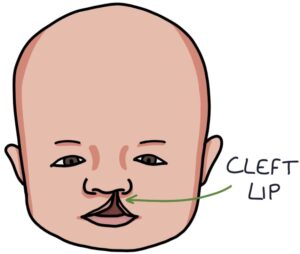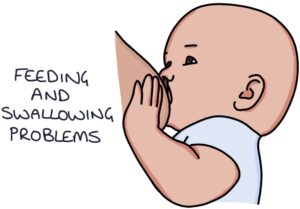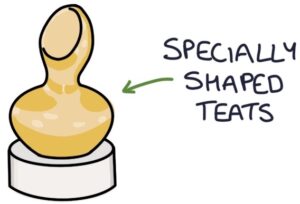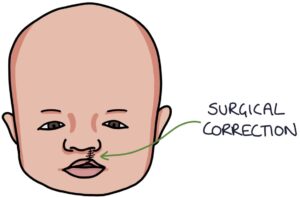Cleft lip is a congenital condition where there is a split or open section of the upper lip. This opening can occur at any point along the top lip, and can extend as high as the nose.

Cleft palate is where a defect exists in the hard or soft palate at the roof of the mouth. This leaves an opening between the mouth and the nasal cavity. Cleft lip and cleft palate can occur together or on their own.

Most cases of cleft lip and cleft palate occur randomly. Having a relative with cleft lip or palate makes it slightly more likely, however it does not follow a traditional inheritance pattern like conditions such as cystic fibrosis. 3 in 10 cases of cleft lip or palate are associated with another underlying syndrome.
Complications
Cleft lip or cleft palate is not life threatening, although it can lead to significant problems with feeding, swallowing and speech. It can also have significant psycho-social implications, including affecting bonding between mother and child. Surgery generally resolves these problems. Children with cleft palates can be more prone to hearing problems, ear infections and glue ear.

Management
Patients should be referred to the local cleft lip services. This involves the specialist multi-disciplinary team:
- Specialist nurses to support and coordinate care
- Plastic, maxillofacial and ENT surgeons
- Dentists
- Speech and language therapists
- Psychologists
- General practitioners
The first priority is to ensure the baby can eat and drink. This may involve specially shaped bottles and teats. The specialist nurse will follow the child up through surgery and beyond to ensure good development.

The definitive treatment is to surgically correct the cleft lip or palate. This leaves a subtle scar, but is generally very successful, giving full functionality to the child. Cleft lip surgery is usually performed at 3 months, whilst cleft palate surgery done at 6 – 12 months.

Last updated January 2020
